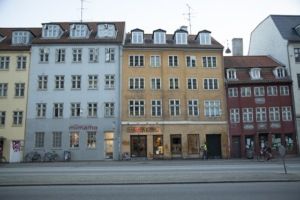News
Property prices in Copenhagen and Aarhus will fall, bank predicts
This article is more than 7 years old.
Have property prices peaked? It certainly could appear that way if economist predictions are correct

Rents have been rising due to inflation (photo: pxhere)
Rising interest rates, a tightening up of the laws regarding credit, and falling prices in Oslo and Stockhom are among the factors contributing to falling apartment prices in Denmark’s two largest cities in the first quarter of 2018.
Figures collected by Sydbank for Finans reveal that the property market is suffering its biggest setback since 2014 and that these lower prices might become a lasting feature, reports TV2 Nyheder.
“We are seeing a cocktail of factors that are together responsible for the biggest fall in prices that we’ve seen over the last four to five years,” said Søren Kristensen, a macro economist at Sydbank.
READ ALSO: Danes going for smaller homes in wake of price spike
According to Sydbank’s model, property prices will fall by 1 percent over the first quarter and this will keep the annual increase down at 6.4 percent. That is rather lower than the 9 percent average gain since the start of 2014.
Over the next year, the increase will be nearer 4 or 5 percent and that will primarily affect the prices of flats.
Interest rates have been increasing since the start of December and this has hit those property owners who are most in debt hard, according to Nordea. These are often found in the bigger towns.
“The tendency that we’ve seen regarding flats with price rises in the double figures over the last year is shifting. That time is over,” said Lise Nytoft Bergman, the chief analyst at Nordea.
In January, 12 percent fewer owner flats were sold in Copenhagen than during the same period last year. That is the first time figures have gone down since 2011.
House prices that have not risen anywhere near as much as prices for flats are only predicted to rise by 1 percent in the first quarter, ending the year with a 3.5 percent rise.
“Property prices have risen so much that a lot of people just can’t afford them. When interest rates rise and it is more difficult to get credit, it has an impact,” explained Nykredit chief economist Tore Stramer.
“We are now entering a period when price rises are going to be far more moderate and more in step with wage rates,” added Stramer.










































